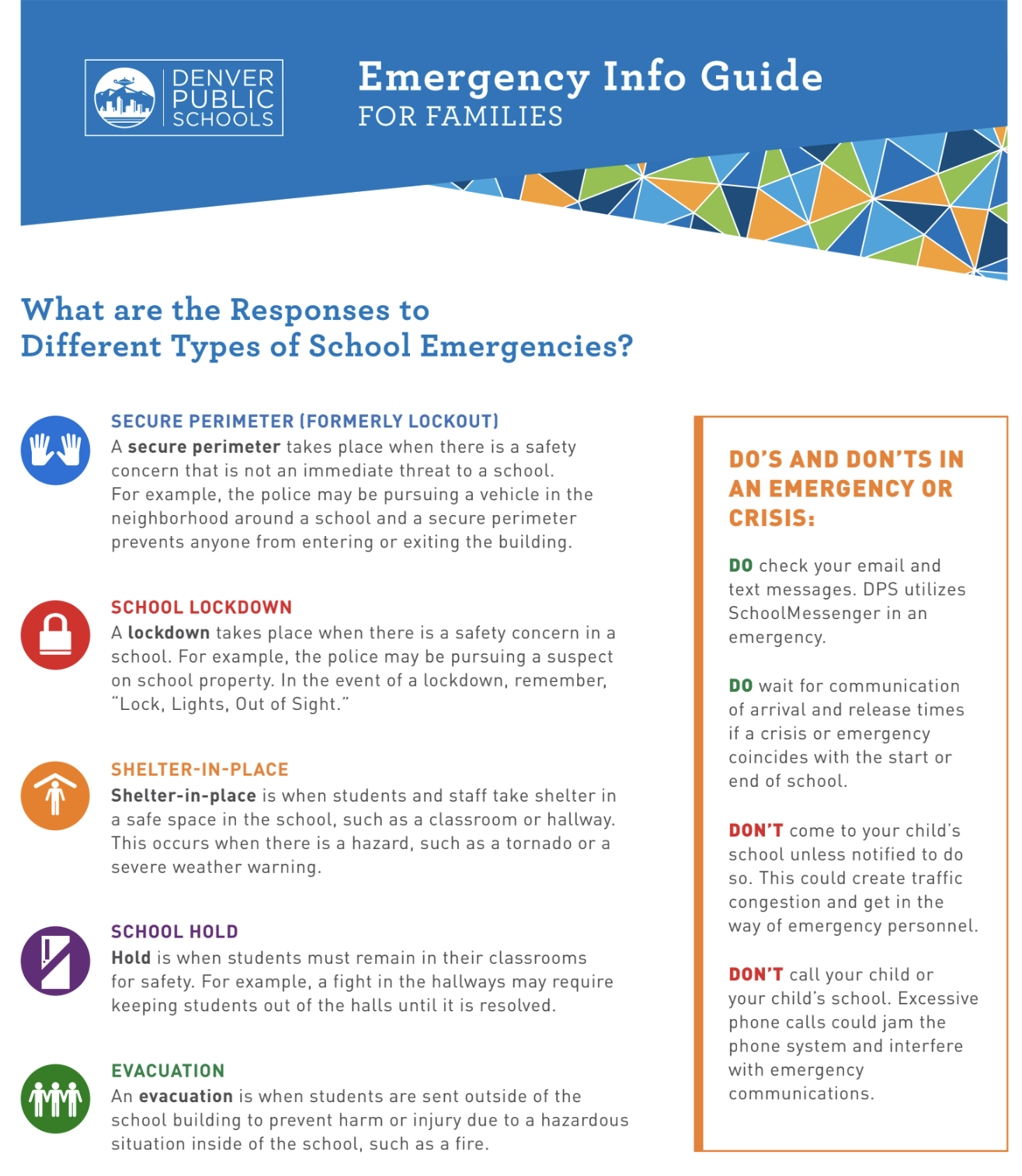Emergency Preparedness
Posted August 29, 2024

At RASA, the safety and well-being of our students are our top priority. We want to ensure that all families are informed and prepared for any potential school emergencies. To ensure integrity in emergency preparedness, we will notify parents after the drill.
Here’s what you need to know:
School Emergency Responses:
- Secure Perimeter: Used when there’s a safety concern nearby. The school remains locked, with no entry or exit.
- Lockdown: Activated for immediate threats on school property. Students follow the “Lock, Lights, Out of Sight” protocol.
- Shelter-in-Place: Implemented during severe weather, with students sheltering in safe spaces within the school.
- School Hold: Students remain in classrooms due to safety concerns, such as disturbances in the hallways.
- Evacuation: Students are moved outside to avoid danger inside the school.
What You Should Do:
- Check your email and text messages for updates during an emergency.
- Wait for official communication before arriving at the school.
- Avoid calling or visiting the school unless instructed, to prevent interference with emergency personnel.
Be Prepared:
- Update your contact information and emergency contacts in the Parent Portal.
- Verify that the correct guardian is listed for emergency pick-ups.
- Talk to your children about what to expect during a school emergency.
Talking to Children: An Approach for Parents
In today’s world, high-profile acts of violence, particularly in schools, can be deeply unsettling for children. They may experience confusion, fear, or anxiety, worrying about their own safety or that of their friends and loved ones. As adults, it’s our responsibility to offer them the guidance and reassurance they need to navigate these challenging emotions.
1. Foster a Sense of Safety and Openness
- Start by reassuring children that they are safe, emphasizing the protective measures in place within their schools. It’s important to validate their feelings—create a supportive space where they feel comfortable sharing their thoughts and fears, helping them understand and articulate these emotions.
2. Engage in Honest and Age-Appropriate Conversations
- Make time for meaningful dialogue. Let your child’s questions guide the depth of your conversation. Children and youth may not always verbalize their concerns immediately, so be patient and observant. Look for subtle signs that they’re ready to talk, such as lingering nearby or expressing interest in activities that provide comfort, like drawing, music, or storytelling.
- For younger children, consider using concrete activities—like drawing or imaginative play—to help them process and express their feelings in a way that feels safe and accessible.
3. Empower Children with Knowledge and Coping Strategies
- Empower children by giving them information that is honest yet appropriate for their age. Explain that while bad things can happen, there are many people—like teachers, police officers, and family members—working hard to keep them safe. Help them develop coping strategies that work for them, whether it’s through creative outlets, physical activity, or simply having someone to talk to.
By approaching these conversations with empathy, openness, and honesty, we can help our children feel more secure and resilient, even in the face of unsettling events. Remember, the goal is to create a foundation of trust and understanding, where children feel safe to express their emotions and confident in their own ability to cope with the world around them.
For additional resources and support, visit the National Association of School Psychologists at safety.dpsk12.org.
